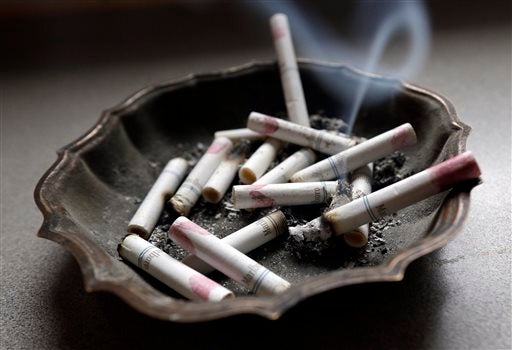Paul O’Connor: Smoking no longer a luxury
Published 6:59 pm Monday, June 26, 2017

- Many of the people who smoke can least afford it. AP photo
RALEIGH — As a boy, I barely knew an adult who didn’t smoke.
My mother and her best friend smoked cigarettes at the kitchen table every afternoon. My dad didn’t smoke, but all his buddies did. After he died of lung cancer at age 50, Army pathologists said his lungs looked as if he had.
My uncles all smoked manly cigarettes, and an aunt smoked menthols. All the men in the ice cream shop where I worked took smoke breaks as I washed dishes. In high school, teachers and students lit up outside the cafeteria at lunch.
How things have changed in the last few years.
A few nights ago, as friends and I prepared to sit at a restaurant patio, one asked that we move inside because smokers were puffing away nearby. Finding a table with smoke-free air was once a regular concern whenever I entered a restaurant. That night, I realized I hadn’t worried about smoke in a restaurant or any other public place for years.
If you are a city dweller, and you live and work among fairly affluent, well-educated people, you will rarely encounter smokers any more. That’s not the case everywhere, however.
The Washington Post published an astonishing article last week. It showed the socio-economic gap among smokers.
While 15 percent of all American adults still smoke, that population is heavily slanted to the poor, the less-educated and to rural residents. “Cigarettes are becoming a habit of the poor,” The Post said.
As the newspaper noted, when cigarette smoking became popular a century or more ago, it was considered a luxury of the well-to-do. My mother, in a candid conversation about her fateful decision to begin smoking, explained that smoking made her feel sophisticated and glamorous, not like some nobody working in a munitions factory. She died of lung cancer, too.
A number of factors are working against tobacco today. Higher taxes mean higher retail prices. Smoking is banned in workplaces, on some public streets and in most facilities, even outdoor stadiums. Health education programs have brought home the anti-tobacco message.
(Nonetheless, tobacco remains a major part of the North Carolina economy.)
(After the federal tobacco reform act of 2004 eliminated the support program, the number of active farms decreased steadily and is now only about a fifth of what it was. But at the same time the number of acres under tobacco cultivation increased: leaf farms are using the economies of scale. North Carolina grew an estimated 346 million pounds of flue-cured tobacco in 2016, and the crop’s value to the state is approaching $1 billion annually.)
The disappearance of smoking in the more affluent, educated classes has created the misperception in political circles that the public health battle of tobacco has been won. Consequently, state and local governments are scaling back cessation programs. North Carolina, quite expectedly, was never one of the more aggressive cessation states in the first place.
Placed in the context of this month’s other public health news, the Post’s findings are concerning. It’s widely expected that the next federal health care program will enroll millions fewer Americans, that rural areas will be hardest hit, that fewer people will be covered by Medicaid and that the poor will be even less able to buy health insurance.
All of this looks like a bad recipe. Poor people getting sick from smoking but not having the insurance to pay their medical bills. Wealthier people are refraining from smoking, most likely staying healthier on the whole, and having insurance, too.
Paul T. O’Connor has covered state government for 39 years.

